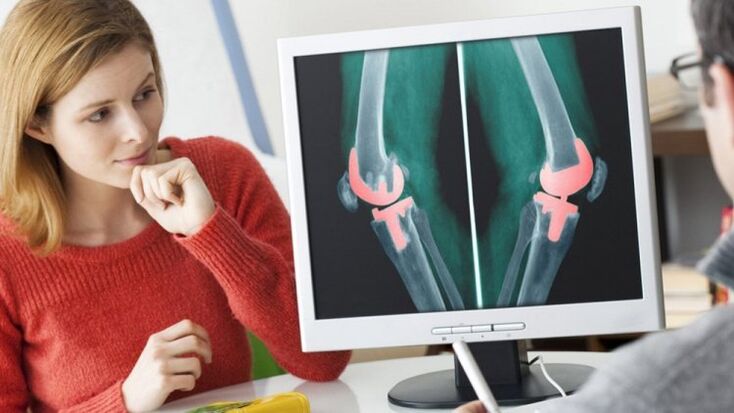Arthrosis is the most common joint damage in medical practice, associated with degenerative-dystrophic processes occurring in it. Mainly due to the aging of the body and the destruction of joint tissue, the disease cannot be completely cured. However, according to experts, it is a person’s power to slow down the destructive process, slow down arthrosis and maintain joint health for a long time.
Arthrosis and its symptoms

The destruction of joints begins with the gradual application of cartilage - the main element of these moving bone connections, which protects them at the point of contact from friction and serves as a shock absorber under mechanical stress. In most cases, this process is due to the deterioration of age -related metabolic processes in the human body and lack of nutrients in the joints. Therefore, the symptoms of the disease usually appear after 40-50 years. However, the development of negative changes in cartilage tissue occurs at an earlier age and consists of a gradual loss of elasticity of the cartilage, its thinning and destruction.
The inability of cartilage to perform its function fully causes negative changes in bone tissue, which can grow, forming osteophytes (growths in the form of tubercles, spines, hooks), which are a source of pain during movement. Gradually, the pathological process involves the articular muscles, ligaments, tendons. Joints can become deformed.
The following symptoms indicate the development of arthrosis:
- pain that increases with movement and physical exercise;
- decreased joint mobility;
- swelling and inflammation (in some cases);
- deformity and immobility of the joints (in severe disease).
Osteoarthritis mainly affects the knees, hip joints, spine and hands of the lumbar and cervical cervix.
Causes of disease and risk factors
The main causes of articular cartilage destruction and the development of arthrosis include:
- hereditary tendencies;
- joint injury, which may be minor, but recurrent, or once, but serious (e. g. , damage to the meniscus);
- age -related changes in cartilage and bone tissue.
There are factors that increase the likelihood of developing arthrosis. The main ones are overweight, which increases the load on the joints, and an inactive lifestyle, which disrupts the blood supply and normal nutrition of the joints, disrupts the metabolism in them. Excessive physical activity, local inflammation, hormonal changes (e. g. , menopause) can also cause arthrosis.
Treatment or prevention?

Complete cure of the disease is not possible - this is a general decision of rheumatologists, whose task is to combat arthrosis. Modern therapies can slow the destruction of cartilage, relieve inflammation, reduce pain and improve the patient’s condition. For this purpose, in the treatment of arthrosis, they use:
- chondroprotectors based on chondroitin sulfates and glucosamine;
- non-steroidal anti-inflammatory drugs;
- intra-articular injection of hyaluronic acid or hormone medication;
- physiotherapy procedures (ultrasound, electrophoresis, laser and magnetic therapy, mud application);
- physiotherapy training.
In severe cases, they require surgery and joint replacement with a prosthesis.
The main task of overcoming this disease, modern medicine considers the prevention of arthrosis and the promotion of a lifestyle that contributes to the maintenance of joint health. First of all, this applies to adolescents and young people who are actively involved in sports, where it is necessary to develop special skills to protect the joints during training (warming and warming of the joints, the use of special protective equipment: knee pads, elbow pads, etc. ). For people who are not involved in sports, the main step to prevent arthrosis is to maintain a normal weight and be physically active.
Weight and nutrition

As a result of many studies, it has been found that obese people have a 3 -fold increased risk of arthrosis. This is explained not only by the fact that being overweight increases the load on the joints, but also by the fact that excess fat provokes the development of many pathological processes in the body that lead to serious diseases such as type 2 diabetes and cardiovascular disorders, which negatively affect joint conditions.
Nutrition as a prevention of arthrosis aims to saturate the body with nutrients necessary for the normal function of articular cartilage, slowing down the degenerative process in it. Adherence to the following basic principles can not only help keep joints in good condition, but also prevent excessive weight gain:
- reduce the caloric content of food by eliminating or limiting fatty meats and poultry;
- eat a number of low -fat dairy products to supply calcium to the bones;
- an increase in the proportion of grains, vegetables and fruits to replenish the body with vitamins and micro-elements needed by the joints.
Particular attention in the nutritional process should be given to foods and dishes that contain natural ingredients that protect and strengthen cartilage tissue. These substances, first of all, include collagen-a protein that is part of the cartilage, ligaments and skin of animals and fish. For this purpose, it is necessary to include meat jelly, aspic (especially from fish), fruit jelly and other dishes containing gelatin, modified collagen, in the diet.
Physical activity to prevent arthrosis

An inactive lifestyle is one of the main enemies of human health, including its musculoskeletal system. While physical activity allows you to simultaneously achieve many of the goals needed to maintain joints and general well -being:
- improve blood circulation and tissue nutrition;
- normalize metabolic processes and prevent excessive weight gain;
- develop muscles, which in turn strengthen the skeletal system;
- train all body systems and increase immunity;
- improve mood.
To keep your joints in good condition, they should not be excessive. But this does not mean that you should give up physical activity. Movement is essential for the joints, but should be moderate, appropriate to the physical shape, age and other individual characteristics of each person.
Experts say that walking is the best prevention for knee arthrosis at any age, and they recommend taking at least 6. 000 steps per day. Swimming is very beneficial, when movement occurs in the absence of negative effects on bone weight. Engaging in any sport or favorite activity related to movement (dancing, gardening, outdoor games with children), provided it is normal, will help prevent arthrosis and keep the joints in good condition in the long run.


























